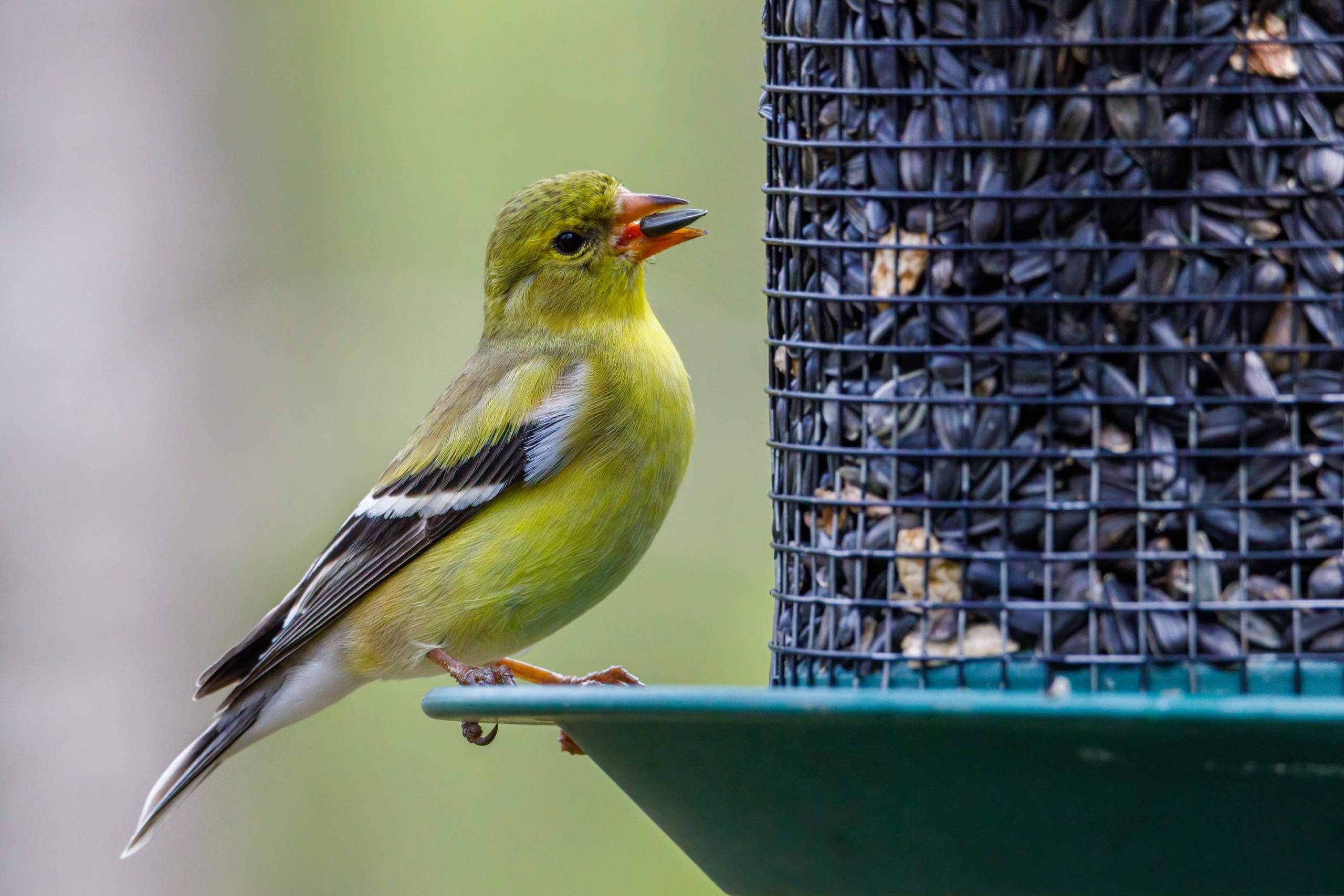Birds are not only beautiful and fascinating creatures to watch, but as pest control experts, they also provide a beneficial service to our gardens. But in the winter season, when our gardens are at rest, non-migratory birds must consume more food if they are going to be able to burn enough calories to keep them warm. Natural sources of foods like berries, seeds, and insects are scarce, so they must work harder to find the sustenance they need. Thankfully, we can supplement their nutritional needs by making high-calorie, bird-friendly foods available.
This article contains affiliate links. If you make a purchase using one of these links, I will receive a very small commission at no additional cost to you, and it will help me maintain this website. Rest assured, I only recommend products I actually like!
What to Do During the Winter
If you are going to offer birds supplemental food in the winter, it is important that you are consistent. It may take a period of time, but once birds discover your birdfeeders, they will be back for more. It is important, therefore, to keep filling them up with feed. If you establish a consistent source of food for them in the winter, they will return throughout the year and help you with pest control in your garden.
If the bird food becomes wet or spoiled in any way, it is important to remove it and clean the feeders before adding fresh feed. The spoiled food can carry bacteria and mold that would be harmful if they consumed it, and they may stop coming to feed altogether.
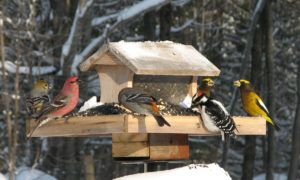
In addition to providing food, it is also helpful to add a nearby source of water like a birdbath or shallow pan. If you live in an area that experiences freezing temperatures, you will need to remember to break the ice when temperatures drop and, of course, replace and refill the water as needed. For the dedicated bird-lover, you can purchase a heating element for birdbaths and other containers to keep the water from freezing.
Bread is often a go-to food for winter feeding. While it may satisfy a bird’s hunger, it lacks nutritional value and is not the best option. Instead, select one of the top nutritious foods from the list below, or better yet, offer them more than one option and thereby attract a variety of birds to your garden.
Top 9 Foods for Birds
1. Black Oil Sunflower Seeds
Many agree that black oil sunflower seeds are the best option because they appeal to a wide variety of birds, including Northern Cardinals, chickadees, House Finches, nuthatches, jays, grosbeaks, tufted titmice, and more. In addition, the seeds have a thinner shell than other kinds of sunflower seeds, and their high oil content makes them very nutritious.
Some gardeners, however, do not like to use sunflower seeds because the birds leave the shells behind when they eat the seed, making a mess in the garden. If discarded shells are something you are concerned about, you can also purchase shelled sunflower seeds.
2. Suet
Suet is simply rendered animal fat. When added to a mixture of seeds, dried fruit, and peanut butter and formed into blocks or balls, it makes an excellent option for winter-feeding. There are numerous recipes online if you would like to make your own. This high-calorie food can be hung from a tree branch with a string or placed in a suet cage feeder. Suet is best served in the winter as warmer temperatures will cause it to melt, although some manufacturers offer no-melt suet for year-round feeding.
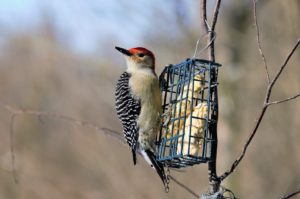
3. Millet
Millet or white proso millet is another bird favorite, especially for smaller birds that prefer to feed on the ground as opposed to bird feeders. Sparrows, doves, red-winged blackbirds, buntings, towhees, and dark-eyed juncos fit this description. Millet can also be served from birdfeeders and is often added to birdseed mixes as it is inexpensive. It can also be purchased as sprays which can be hung from a tray feeder or a tree branch.
4. Nyjer
Nyjer seeds, also called nyger and niger, is often confused with thistle seed, but it is from the same family as sunflowers and not thistle. (Birdseed companies may, nevertheless, call it “thistle seed.”) Like black oil sunflower seeds, it is an oily seed that is calorie-dense. The tiny black seed is a favorite of goldfinches, although it attracts other species such as Purple Finches, Pine Siskins, and Redpolls as well. Because the seeds are small and somewhat expensive, a Nyjer feeder is a good way to minimize waste.
5. Peanuts and Peanut Butter
Unsalted peanuts and peanut butter are more high-fat, high-calorie foods that make a great winter option for birds. Peanuts will attract a good variety of species including, jays, titmice, chickadees, woodpeckers, and nuthatches. Place the nuts on tray or platform feeders or smear peanut butter on bark or pinecones placed on trays, fence rails, small containers, or hung from tree branches.
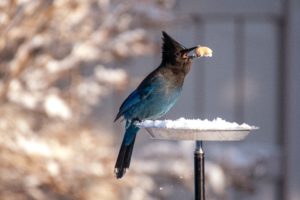
6. Mealworms
If you own chickens, you may already know how much birds love mealworms! What you might not know is that mealworms are the larval stage of the mealworm beetle. Since it would be challenging to keep live mealworms in a feeder, you can purchase freeze-dried mealworms instead. Robins, chickadees, woodpeckers, cardinals, nuthatches, bluebirds, wrens, towhees, and thrashers also love these tasty treats.
7. Fruit
Fresh fruit makes for a nice winter treat for birds. Thread chopped apples, pears, oranges, berries, and grapes onto a special fruit skewer for birds to feed on. Or place the fruit pieces on a platform feeder. These natural foods are also helpful because of their water content, as water can sometimes be difficult to find in the winter.
8. Safflower Seed
Safflower seeds come from the safflower plant, an annual that has red, yellow, and orange blossoms. The white seed may not be familiar to you or your local birds, so it may take a while for them to get used to it. Combine it with black oil sunflower seeds or a birdseed mix to help them become accustomed to it. Once they catch on, you will find chickadees, jays, woodpeckers, mourning doves, Northern Cardinals, House Finches, and Indigo Buntings, nuthatches, finches, and Tufted titmice readily partaking.
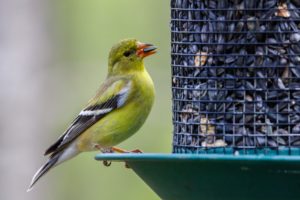
9. Seed Mixes
Seed mixes are perhaps the most popular feed that bird lovers give their feathered friends. Mixes that appeal to a variety of birds are readily available online and at most retail stores. It’s a good idea to avoid mixes that have a lot of oats, wheat, milo, and corn, as these are often used as fillers. What’s more, birds do not always find these ingredients appetizing. You can also purchase mixes that cater to certain types of birds.
Winter does not have to be a challenge for the birds in your area. It takes only a little effort and not much cost to help them find the nutrition they need to make it through the cold weather months. Plus, it is a way to enjoy their beauty and antics while we wait for the spring to awaken our gardens.
Thank you for reading this article! If you found it helpful, please consider sharing it with others via email and social media!
